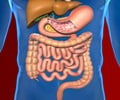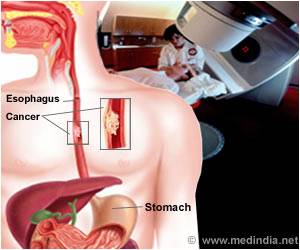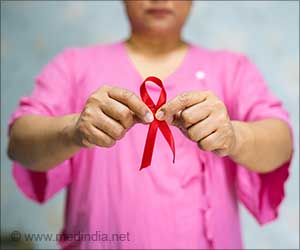DNA-based nanogels break down and release their chemotherapeutic contents within cancer cells, minimizing the impacts on normal ones and potentially eliminating painful and uncomfortable side effects.

‘DNA-based nanogels can introduce drugs into cancer cells with a high specificity, reducing the risk of side effects.’
Read More..




Since many of these drugs are toxic to all cells, the desired tumor shrinkage can be accompanied by undesirable side effects, such as hair loss, gastrointestinal issues and fatigue.Read More..
Nanogels made of DNA are one way that these drugs could be delivered, but they would still enter all cells. Tianhu Li, Teck-Peng Loh and colleagues reasoned that biomarkers -- proteins or other components that are present in differing amounts in cancer cells and their healthy counterparts -- could play a role in breaking down a nanogel, causing it to release its contents only in those that are cancerous.
A biomarker called FEN1, a repair enzyme that cuts certain types of DNA, is present in larger amounts in cancer cells compared with healthy ones. The researchers wanted to see whether they could design a DNA nanogel that would specifically be degraded in cancer cells by FEN1.
To make DNA nanogels, the researchers used special DNA structures that FEN1 could recognize and cut. With cell-free systems, the researchers observed that the DNA-based nanogels were broken down by FEN1 but not by other DNA repair enzymes or compounds.
When live cells were incubated with the DNA-based nanogels, healthy ones did not have enough FEN1 to break them down, but cancer cells did. When the chemotherapeutic drugs doxorubicin and vinorelbine were incorporated into the nanogel, human breast cancer cells died at higher rates than normal, healthy breast cells.
Advertisement
The authors acknowledge funding from Northwestern Polytechnical University in China and the Agency for Science, Technology and Research in Singapore.
The Society is a global leader in providing access to chemistry-related information and research through its multiple research solutions, peer-reviewed journals, scientific conferences, eBooks and weekly news periodical Chemical & Engineering News. ACS journals are among the most cited, most trusted and most read within the scientific literature; however, ACS itself does not conduct chemical research.
As a specialist in scientific information solutions (including SciFinder� and STN�), its CAS division powers global research, discovery and innovation. ACS' main offices are in Washington, D.C., and Columbus, Ohio.
Source-Eurekalert












